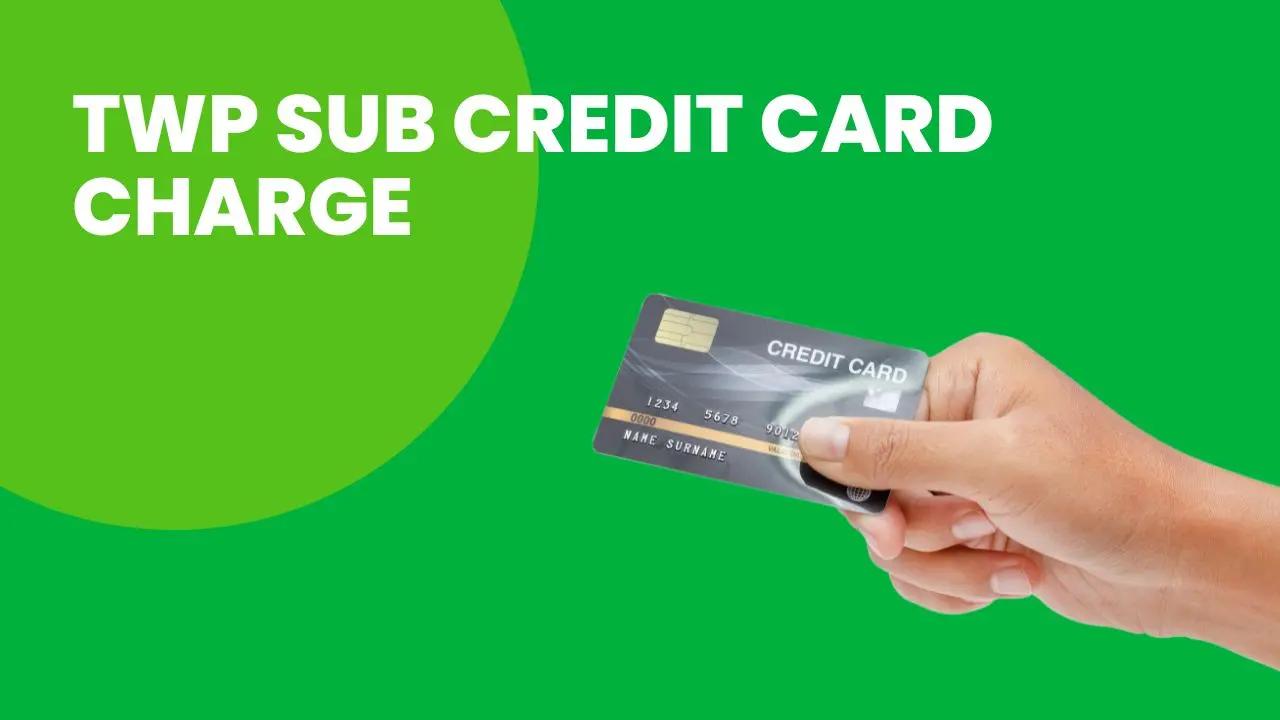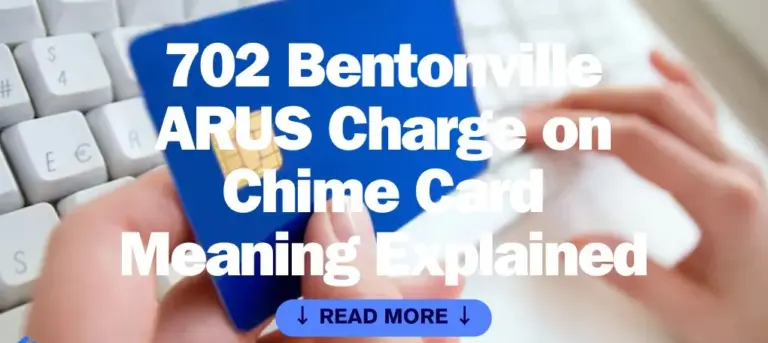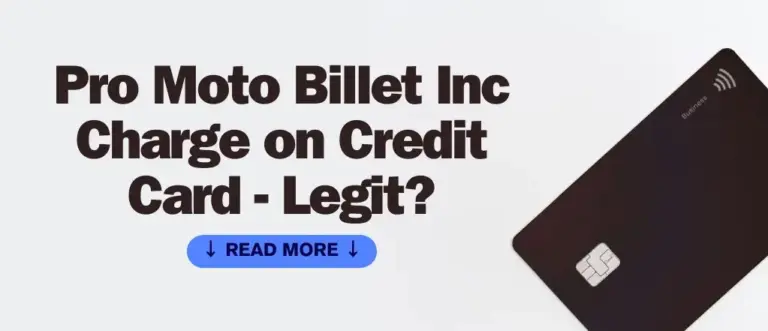TWP Sub Credit Card Charge: What Does it Mean?
Have you ever seen a charge on your credit card statement labeled “TWP SUB” and wondered what it was? It can be frustrating to spot unexpected transactions, especially when they don’t make sense right away. This particular charge often causes confusion among cardholders, leaving many to question its origin and purpose.
In most cases, the TWP SUB charge relates to a subscription service, but sometimes, it could point to unauthorized activity. Understanding the charge is crucial to managing your finances and avoiding fraud. Let’s take a closer look at what TWP SUB means and how you can identify if it’s legitimate.
What is TWP SUB Credit Card Charge?
The “TWP SUB” credit card charge is most commonly associated with a subscription to The Washington Post. The abbreviation “TWP” stands for The Washington Post, and “SUB” refers to a subscription service. Often, people sign up for digital subscriptions or trial services and forget about them. As a result, when the subscription renews, the charge may appear unexpectedly. The amount can vary depending on the plan, but it’s typically a monthly or annual subscription fee. This charge might show up with slight variations on your credit card statement, such as “TWP*SUB” followed by numbers, which could be a reference to your account or the transaction.
If you notice this charge but don’t recall subscribing, reviewing your emails or online receipts is important. Many times, people sign up for free trials and fail to cancel before the trial ends, resulting in a charge they weren’t expecting. Additionally, charges like these can sometimes look suspicious if the description on the statement isn’t clear. Understanding where the charge comes from will help you determine if it’s legitimate or if you need to take action to remove it.
How Do You Identify the Source of the TWP SUB Charge?
If you’ve come across a TWP SUB charge, the next step is to identify its source. Begin by checking your email for any subscription confirmations or renewal notices. Often, The Washington Post sends emails when you first sign up or renew a subscription. Search for keywords like “Washington Post” or “subscription” in your inbox.
Another approach is to review your recent credit card statements closely. Look for recurring charges that might correlate with the TWP SUB description. Pay attention to when the charge first appeared and if it aligns with any past subscriptions or trials. In some cases, the numbers following “TWP*SUB” on your statement could correspond to your account or transaction number, providing a clue.
If email searches and statement reviews don’t help, you can contact your bank or credit card company for assistance. They can often provide more detailed information about the transaction, including the company or service behind it. Alternatively, contacting The Washington Post directly with your account or card details may help you trace the charge.
Is the TWP SUB Charge Legitimate or Fraudulent?
When you spot a TWP SUB charge on your credit card statement, the first question is whether it’s legitimate. If you subscribed to The Washington Post, the charge is most likely valid. However, if you don’t recall signing up for any services, it could be a sign of either an overlooked subscription or, in worse cases, fraud.
To confirm whether the charge is legitimate, check your credit card statement for other recent payments to The Washington Post. If there’s a history of similar charges, you’re probably dealing with a subscription that’s automatically renewing. On the other hand, if the charge seems out of place, it’s best to act quickly.
If you suspect fraud, contact your bank immediately. Banks typically have procedures to dispute unauthorized transactions. They may also freeze your card to prevent further charges. Additionally, you can contact The Washington Post to verify whether your account exists and to cancel any unrecognized subscriptions. Remember, swift action is key in resolving fraudulent charges and preventing financial loss.
How to Cancel TWP SUB Charges?
If you’ve confirmed that the TWP SUB charge is legitimate but no longer want the subscription, canceling it is a straightforward process.
- Go to The Washington Post website and log into your account using your registered email and password.
- Once logged in, go to the “My Account” or “Billing” section. Look for options related to your subscription or payment.
- In the subscription section, there should be an option to cancel your plan. Click on the “Cancel Subscription” button or follow the prompts provided.
- You may be asked to confirm your cancellation. Review any cancellation details and confirm the termination of your subscription.
- After canceling, check your email for a confirmation of cancellation. Ensure that no future payments will be deducted by reviewing the confirmation email.
- If you’re unable to cancel online, or if you’re experiencing issues, contact The Washington Post customer service. Provide them with relevant details from your credit card statement and request cancellation assistance.
- After cancellation, keep an eye on your credit card statements to ensure that no further charges appear.
In some cases, you might be offered a discounted rate or other promotions when attempting to cancel. While it can be tempting to keep the service at a lower cost, ensure that it’s something you truly want before proceeding. If you still wish to cancel, follow through and verify that no future payments will be deducted.
If you can’t cancel through the website or you no longer have access to your account, contact The Washington Post customer service team. Provide them with details from your credit card statement, such as the date and amount of the charge, and request assistance in terminating the subscription.
How to Avoid Unwanted Charges in the Future?
Preventing unexpected charges like TWP SUB from appearing on your credit card requires proactive financial management. It’s easy to forget about free trials or subscriptions, but with a few simple strategies, you can avoid these surprises.
- Track Your Subscriptions: Keep a list of all your active subscriptions. Whether they’re digital services, streaming platforms, or news outlets, knowing what you’re subscribed to helps you avoid unwanted renewals. You can use apps or even a simple spreadsheet to track subscription details.
- Set Reminders: When you sign up for a free trial or new service, set a calendar reminder to review or cancel the subscription before the trial period ends. This ensures you won’t get automatically charged after the trial expires.
- Review Statements Regularly: Make it a habit to review your credit card statements every month. Spotting unfamiliar charges early gives you the opportunity to address them before they become recurring payments.
- Use Payment Alerts: Many banks offer alert services that notify you when a payment is processed on your account. Setting these alerts can help you catch unexpected charges as they happen.
- Be Cautious with Free Trials: Free trials often require a credit card upfront, which can result in charges once the trial period ends. Always read the terms and set reminders to cancel if you don’t wish to continue the service.
These steps will help you stay in control of your finances and avoid unwanted credit card charges.
Frequently Asked Questions (F.A.Q)
What is a TWP SUB credit card charge?
The TWP SUB charge refers to a subscription fee for The Washington Post, typically for digital or print services. It appears on your credit card statement when you subscribe to their content. If you don’t recognize it, it might be due to a forgotten subscription or a free trial that automatically converted into a paid plan.
How do I dispute a TWP SUB charge if it’s unauthorized?
First, contact The Washington Post customer service to inquire about the charge. If it’s unauthorized or you cannot resolve it with the provider, reach out to your credit card company to dispute the transaction. Many banks offer protection against fraudulent charges, and you can get a refund if proven valid.
How do I stop the TWP SUB charge from recurring?
You can cancel the subscription through The Washington Post website by navigating to the account settings and selecting cancellation options. If you can’t access your account or face issues, their customer service can assist you with canceling the subscription.
What if the TWP SUB charge is fraudulent?
If the charge is fraudulent, contact your bank immediately. They can freeze your account and issue a new card to prevent future unauthorized transactions. You should also report the charge to your credit card company as part of their fraud prevention service.
Wrapping Up
Encountering a TWP SUB charge on your credit card statement can initially cause concern, especially if you don’t recall signing up for a service. However, most of the time, this charge is linked to a legitimate subscription to The Washington Post. By following the steps outlined above, such as checking your email, reviewing your credit card statements, and contacting customer service, you can easily identify and manage the charge.
| Read Also |
| Pro Moto Billet Inc Card Charge |



